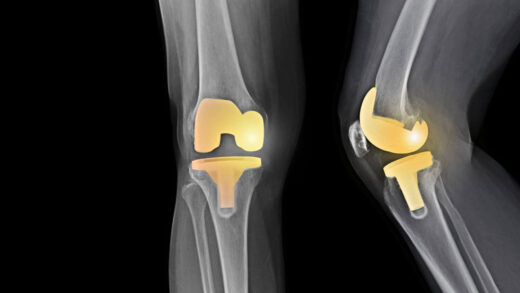Knee surgery is a common medical procedure used to address a wide range of issues affecting the knee joint, including injuries, degenerative conditions, and structural abnormalities. The knee is one of the most complex and frequently used joints in the human body, and it is essential for everyday movements such as walking, running, sitting, and standing. When the knee is damaged or affected by disease, surgery may be necessary to restore mobility and alleviate pain.
In this article, we will explore the types of knee surgeries, when surgery is needed, what the procedures involve, recovery expectations, risks, and how to ensure optimal healing post-operation.

Anatomy of the Knee Joint
Before delving into surgical procedures, it is helpful to understand the basic anatomy of the knee. The knee is a hinge joint made up of three main bones:
- Femur (thigh bone)
- Tibia (shin bone)
- Patella (kneecap)
These bones are connected by ligaments, cushioned by cartilage, and supported by muscles and tendons. The meniscus (a type of cartilage) acts as a shock absorber between the femur and tibia. The joint is also enclosed in a capsule filled with synovial fluid, which helps lubricate and protect the knee.
Types of Knee Surgery
There are several types of knee surgeries, each tailored to treat specific conditions. The most common procedures include:
1. Arthroscopic Knee Surgery
Arthroscopy is a minimally invasive procedure that involves inserting a small camera (arthroscope) and instruments into the knee through tiny incisions. It is commonly used to:
- Repair torn meniscus
- Remove loose cartilage or bone fragments
- Treat ligament injuries (e.g., ACL reconstruction)
- Diagnose unexplained knee pain
2. Total Knee Replacement (Arthroplasty)
This procedure involves replacing damaged or worn-out parts of the knee joint with artificial components (prostheses). It is typically recommended for patients with severe osteoarthritis or rheumatoid arthritis who have not responded to other treatments.
3. Partial Knee Replacement
Only the damaged portion of the knee is replaced, preserving as much of the natural knee structure as possible. This is an option for patients with damage confined to one part of the knee.
4. ACL Reconstruction
The anterior cruciate ligament (ACL) is a key ligament for knee stability. ACL reconstruction involves replacing the torn ligament with a graft, which may be taken from the patient’s own body (autograft) or a donor (allograft).
5. Meniscus Repair
Depending on the severity and location of the tear, the meniscus may be repaired, partially removed (meniscectomy), or in rare cases, replaced with donor tissue (meniscal transplant).
6. Osteotomy
This involves cutting and realigning bones to relieve pressure on the damaged part of the knee. It is often used for younger patients with early-stage arthritis and is seen as a joint-preserving alternative to total knee replacement.
Indications for Knee Surgery
Knee surgery is not always the first option and is usually recommended after conservative treatments (such as physical therapy, medications, or injections) fail to provide relief. Indications for knee surgery may include:
- Chronic knee pain interfering with daily activities
- Limited range of motion
- Persistent swelling and inflammation
- Joint instability or frequent knee giving way
- Structural damage visible on imaging (MRI or X-ray)
- Sports injuries (e.g., torn ACL, meniscus)
- Degenerative diseases like osteoarthritis or rheumatoid arthritis
Preparing for Surgery
Preparation for knee surgery typically involves:
- Medical evaluation and physical examination
- Imaging studies (MRI, CT scans, or X-rays)
- Blood tests and other pre-operative screenings
- Discontinuing certain medications (as advised by the surgeon)
- Arranging for post-operative support (such as help at home)
Patients may also be advised to strengthen their muscles and improve flexibility through a prehabilitation program.
The Surgical Procedure
The surgical procedure varies depending on the type of surgery. Here is a general overview:
During Arthroscopic Surgery:
- Performed under regional or general anesthesia
- Small incisions are made around the knee
- Arthroscope and instruments are inserted
- The surgeon repairs or removes damaged tissue
- Procedure lasts 30 minutes to 2 hours
During Total Knee Replacement:
- General or spinal anesthesia is administered
- An 8–10-inch incision is made on the front of the knee
- Damaged cartilage and bone are removed
- Artificial joint components are implanted
- Procedure takes 1.5 to 3 hours
After surgery, patients are monitored in a recovery room before being transferred to a hospital room or discharged home, depending on the surgery type and the patient’s condition.
Recovery and Rehabilitation
Recovery times vary significantly based on the procedure and individual health factors. Here’s a general guide:
Arthroscopic Surgery Recovery
- Most patients go home the same day
- Crutches or braces may be needed temporarily
- Physical therapy begins within a few days
- Full recovery in 4 to 6 weeks
Total Knee Replacement Recovery
- Hospital stay of 1–3 days
- Intensive physical therapy for several weeks
- Use of a walker or crutches during the initial phase
- Driving possible after 4–6 weeks
- Full recovery in 3 to 6 months, sometimes up to a year
Rehabilitation Tips
- Follow all post-op instructions
- Participate actively in physical therapy
- Use pain medications as prescribed
- Maintain a healthy diet to promote healing
- Avoid high-impact activities until cleared by your doctor
Risks and Complications
As with any surgery, knee procedures carry certain risks, although complications are relatively rare when performed by experienced surgeons. Potential risks include:
- Infection
- Blood clots
- Nerve or blood vessel injury
- Implant failure or loosening (in replacement surgeries)
- Persistent pain or stiffness
- Adverse reaction to anesthesia
To minimize risks, patients should follow their surgeon’s instructions and attend all follow-up appointments.
Success Rates and Outcomes
Knee surgery generally has a high success rate, particularly for total knee replacements. Studies show that:
- Over 90% of total knee replacement patients experience significant pain relief and improved mobility
- ACL reconstruction restores stability in 85–95% of cases
- Arthroscopic procedures result in positive outcomes for many patients, especially athletes
Long-term outcomes are improved with proper rehabilitation, lifestyle changes, and maintaining a healthy weight.
When to Contact a Doctor
After surgery, it’s essential to watch for signs of complications. Contact your doctor if you experience:
- Fever over 101°F (38.3°C)
- Increased redness or drainage at the incision site
- Severe or increasing pain
- Swelling that does not improve
- Calf pain or shortness of breath (possible signs of a blood clot)
Conclusion
Knee surgery has evolved significantly with advances in medical technology and surgical techniques. Whether you are dealing with a sports injury, arthritis, or chronic knee pain, there are effective surgical options that can restore function and improve your quality of life.
However, surgery is just one part of the recovery process. Commitment to rehabilitation, open communication with your healthcare team, and a proactive approach to your health will help ensure the best possible outcome. Always consult with an orthopedic specialist to determine the most appropriate treatment for your specific condition.
Erdem Hospital: The Best Solution for Knee Surgery

When it comes to knee surgery, choosing the right hospital is crucial for a successful recovery and long-term mobility. Erdem Hospital stands out as a leading center for orthopedic care, offering advanced surgical techniques, highly experienced surgeons, and personalized rehabilitation programs. With a patient-centered approach and state-of-the-art technology, Erdem Hospital ensures effective treatment and faster healing for every knee condition — from sports injuries to total knee replacements. Trust your mobility to the experts at Erdem Hospital.